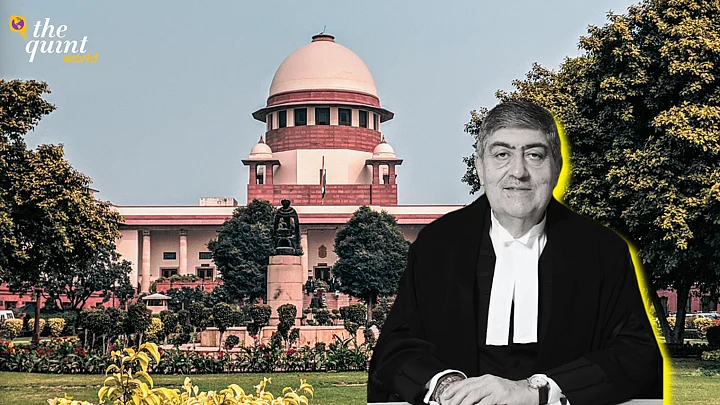Justice Sanjay Kishan Kaul, one of the five judges of the Supreme Court Bench that upheld the central government’s abrogation of Article 370, had advocated for the establishment of an "impartial Truth and Reconciliation Commission" (TRCs).
This commission Justice Kaul refers to was a popular experiment in South Africa to investigate human rights violations during the Apartheid period and aimed at acting as a means of reckoning for victims and building bridges to foster peacebuilding.
In the Indian context, the commission would investigate and document human rights violations committed by both state and non-state actors in Jammu and Kashmir since the 1980s, with its primary aim being to suggest measures for reconciliation.
He stressed the importance of a time-bound exercise, highlighting that an entire generation, referring to Kashmiri Pandits and the exodus which forced them to leave the valley, has grown up amidst pervasive distrust and called the issue a fundamental duty owed to the youth.
Over the last 30 years, over 40 nations have created truth commissions, including countries like Canada, Chile, Ecuador, Ghana, Guatemala, Kenya, Liberia, Morocco, the Philippines, Rwanda, Sierra Leone, South Africa, and South Korea. The aim has been to seek healing through restorative justice, departing from the retributive justice system showcased notably during the Nuremberg Trials after World War II.
Lessons From Overseas: Success in South Africa, Shortcomings From Canada
A Truth and Reconciliation Commission, often called a 'truth commission,' is an established committee that aims not only to acknowledge but also to uncover and disclose past wrongdoings committed by a government, non-state entities, or combatants. Its primary goal is to address and resolve lingering conflicts stemming from historical events.
Human rights activist and prominent transitional justice figure Priscilla B Hayner, defines such a committee as one that focuses specifically on past events, engages with the affected population to gather their experiences and perspectives, and is officially authorised by the state.
In its essence, TRCs are mechanisms established in good faith, focused on creating a comprehensive and timely report on human rights violations. This process serves as a crucial step for societies to move forward from their troubled pasts towards a more reconciled future.
The best-known and most consequential TRCs are those which were set up in South Africa, Canada and Australia.
The mandate in South Africa was "to investigate gross human rights violations that were perpetrated during the period of the Apartheid regime from 1960 to 1994, including abductions, killings, torture."
"Its mandate covered both violations by both the state and the liberation movements and allowed the commission to hold special hearings focused on specific sectors, institutions, and individuals,” the US Institute of Peace said.
Five volumes of the commission’s report were released in October 1998, and two subsequent volumes in March 2003, hailed as one of the most successful commissions which chose to pursue forgiveness over prosecution, and reparation over retaliation.
While opinions about the effectiveness of the restorative justice method employed by TRCs) compared to retributive justice, which focuses on punishment, all of the participants in a study by the Journal of Black Studies perceived the TRC to be effective in bringing out the truth, but to varying degrees.
However, critics have also pointed out that letting perpetrators off the hook by allowing them to be free without punishment and failing the victims who did not see adequate compensation. But regardless of criticisms, the process acted as a fundamental pillar in hoisting South Africa into the democratic era.
In Canada’s case, the Canadian TRC provided those affected by the Indian Residential Schools system to share their narratives. Close to 1,50,000 indigenous children were forced to leave their families and attend residential schools across the region.
The Challenges
Justice Kaul expressed his belief that a truth commission could serve as a healing salve for the people, providing a platform for victims to share their narratives. This, in turn, could prompt acknowledgement from both those responsible for the wrongs and society at large, fostering a path toward reconciliation.
However, the effectiveness of such commissions hinges on their fact-finding abilities, which raises concerns about why they should be established, especially when individuals in power might fear implications in the findings.
Additionally, the challenge in India lies in determining who would have the authority to institute such a commission. While civil society's involvement is crucial, these commissions have historically seen better outcomes when established by a country's executive.
Commissions initiated by civil society often lack the same legitimacy and official endorsement, leading to reports that may not carry as much weight. On the other hand, when a commission is established by the State, there's a risk of diluting its findings, especially in cases where human rights violations align with the State's ideology.
Eric Brahm, in his discussion on the limitations of Truth and Reconciliation Commissions, highlights how, for many, these commissions symbolise a form of accountability for human rights abuses, which historically has been a rarity worldwide.
However, a TRC’s most likely shortcoming lies in its inability to actively contribute to meaningful social and economic restitution. Furthermore, the disconnect between policy intentions and their practical execution persists, hindering the pursuit of equitable land distribution. Presently, the ownership of a majority of resources remains concentrated among the white population, while many black individuals reside in densely populated regions lacking access to fundamental infrastructure and necessities.
TRCs frequently fall short of providing sufficient reparations to victims. Accountability primarily takes the form of public acknowledgement of wrongs committed by perpetrators, enhanced dissemination of truth-related information, and the opportunity for victims to be heard.
Moreover, Canada’s case brings to light a likely issue regarding the lack of a cohesive historical narrative as well. Given that a TRC’s strategy is contingent on establishing an accurate historical narrative, individuals misunderstanding and misrepresenting their stories will act as a further hindrance.
